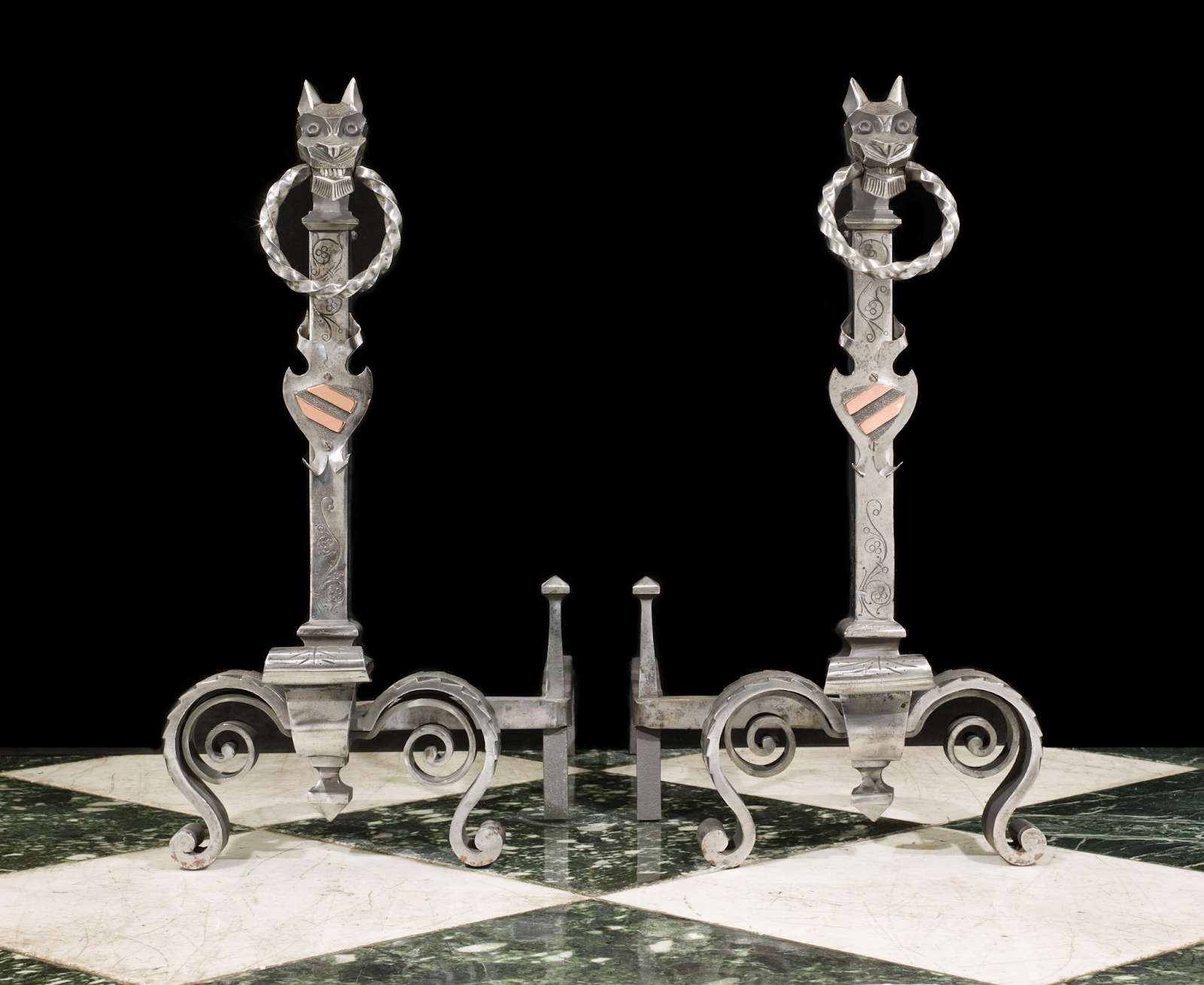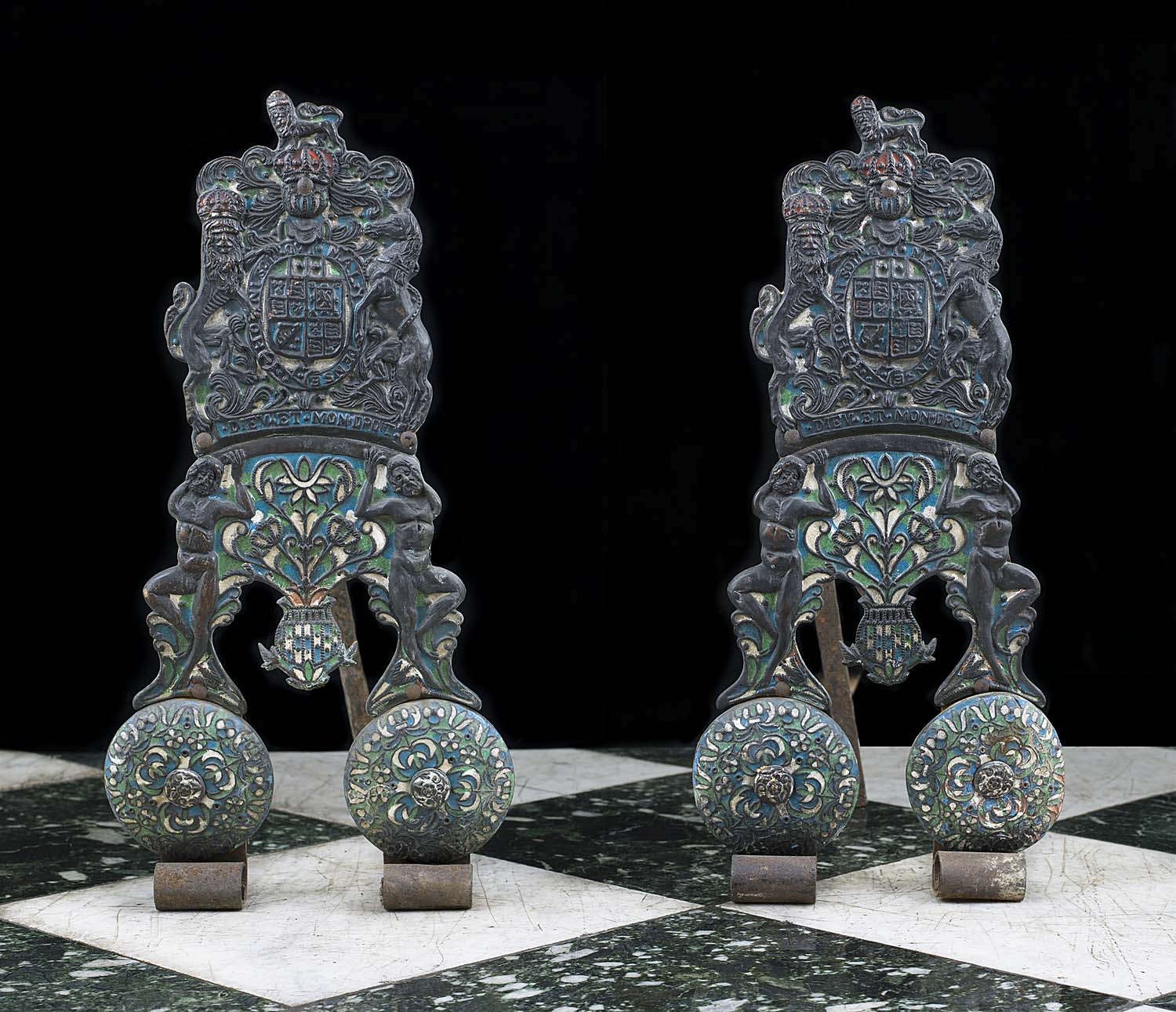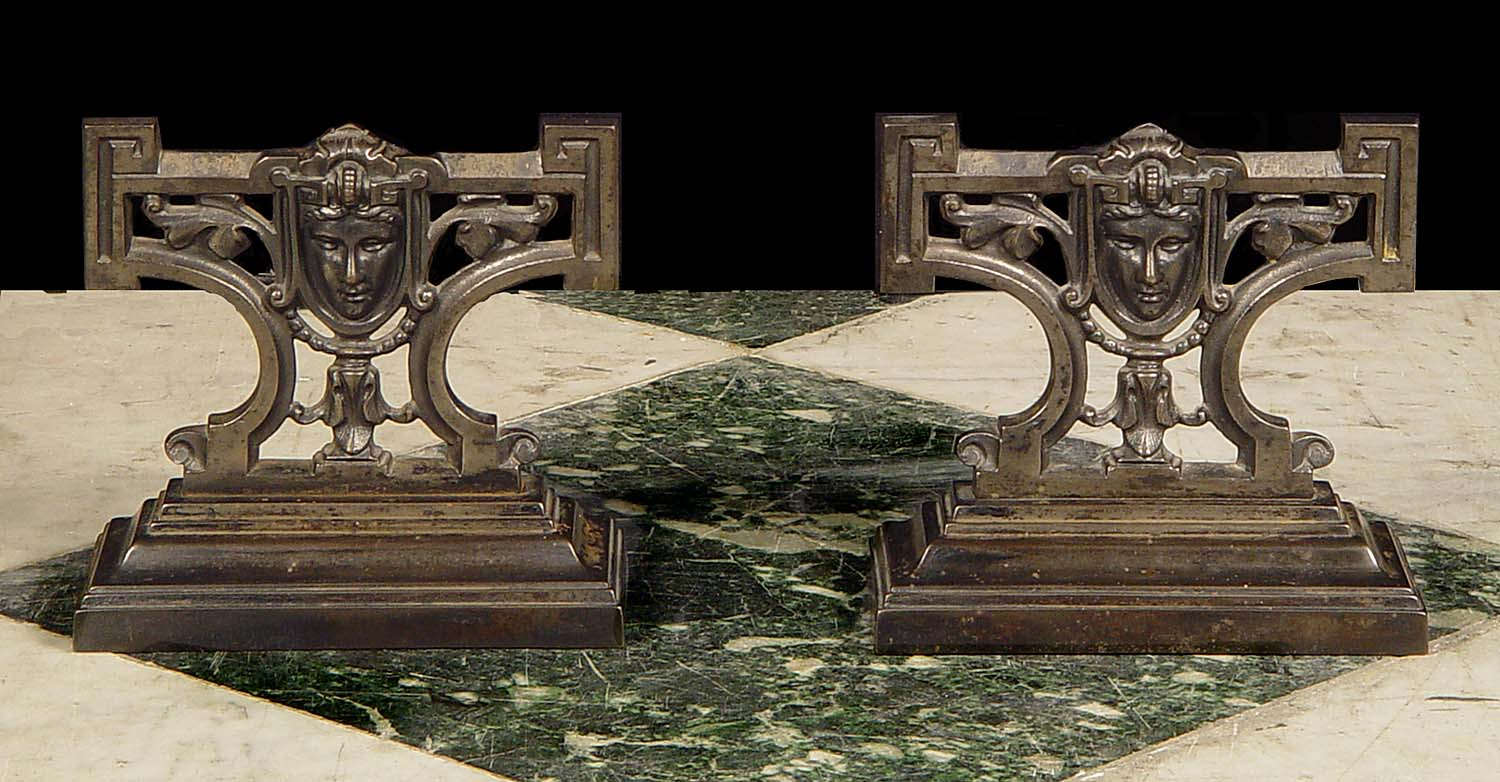Some pairs of andirons can look like two small dogs, lying beside the warm fire burning away, keeping warm and guarding the flame.

× 
With their unusual name, distinct designs and wide variety of styles, we wouldn’t be too surprised if you hear about them and wonder: “What are fire dogs used for?” You may know fire dogs by their perhaps more common name, andirons.
So first of all, this begs the question, why call them fire dogs? There are a couple of common theories:
- The first is that the name ‘fire dogs’ alludes to the shape of some andirons. Some pairs of andirons can look like two small dogs, lying beside the warm fire burning away, keeping warm and guarding the flame.
- But the French term for an andiron is chenet and this meant ‘little dog’ originally, so that’s another plausible reason behind the name.
Now you know where the fire dog might get its name from, what is it used for?

× 
What are fire dogs used for?
Fire dogs usually stand on short legs, with an upright guard connecting them and this keeps the logs in the fireplace as they burn then settle.
In short, they support the firewood. Fire dogs usually stand on short legs, with an upright guard connecting them and this keeps the logs in the fireplace as they burn then settle.
They are a pair of bracket supports. You lay logs on them to burn in an open fireplace, allowing air to circulate underneath and prevent a big buildup of smoke – the logs burn better when resting on the two brackets:
- There is usually a tall vertical part at the front, with two legs or more, preventing the logs from rolling forward out of the fireplace opening and into the living room.
- Then there’s a lower horizontal bar part extending further back into the fireplace, which the logs rest on.
Early usage dates back all the way to Ancient Greek times. In the picture below, you see a pair of cast iron Greek Revival style fire dogs – with a pierced, relief cast decoration of masks and foliage on a moulded plinth.
In fact, the history of andirons is a rich and storied one.

× 
Antique fire dogs for fireplaces – a history of andirons
Early andirons supported spits for cooking meat on open fires, before their role changed once cast iron fireplaces became more common.
In fact, early andirons supported spits for cooking meat on open fires, before their role changed once cast iron fireplaces became more common.
And in another use case, there is an early religious connotation to fire dogs – or ‘moon idols’, also known as ‘moon horns’, to give andirons even more names!
That’s because in early European religions, some andirons would resemble a pair of horns or crescent moons.
They could hold wood or logs off the ground within a fire altar or play a role in forms of worship – as part of a bull cult, for example.
Fire dogs in France from Louis XIV onwards are well known for their beautiful, artistic designs.
Here are our notes on some of the other notable changes to fire dogs throughout history:
- Pre-Renaissance: Predominantly wrought iron fire dogs had relatively plain designs.
- Renaissance era: Designers started decorating fire dogs around the vertical front part, using different metals including silver, brass and bronze.
- 17th century: Many fire dogs had very elaborate brass fronts, sometimes with enamel for extra decoration – famous andirons include the Algardi Fire Dogs. For another example, above you see a very rare pair of Charles II enameled brass andirons depicting royal arms, decorative flowers and male figures.
- 18th century: Fire dogs started featuring classical forms and designs with plenty of variation, with andirons increasingly used for purely decorative reasons. The switch to a decorative purpose was due to many fireplaces in the 18th century having metal grates built-in, capable of keeping firewood and coal elevated.
Fire dogs in France from Louis XIV onwards are well known for their beautiful, artistic designs. For example, take a look at this pair of chenets in the Louis XVI style, below.
It’s a striking pair of brass chenets – without the bars to hold the logs that andirons have – adorned with twin pairs of egg and cup finials. They are sitting above foliate paterae flanking draped, spindle friezes and the back bars with small brass, steeple finials, which are all supported by tapering reeded legs.

× 
Final thoughts: Antique fire dogs in your home
The original purpose of fire dogs was to enable better burning in a fireplace.
But they also do a brilliant job as hearthside accessories.
No matter your taste and preferences, we have a wide range of antique andirons, firedogs or chenets representing different styles and eras throughout history.
For other informative articles, take a look at our full blog. For example, previously we’ve covered how to choose an antique fire screen or guard for every living space.
Here at Westland London, we specialise in antique fireplaces and their accessories, offering unrivalled expertise and a carefully curated selection of rare finds.
Please contact us or explore our latest antiques to find the perfect piece for your home.